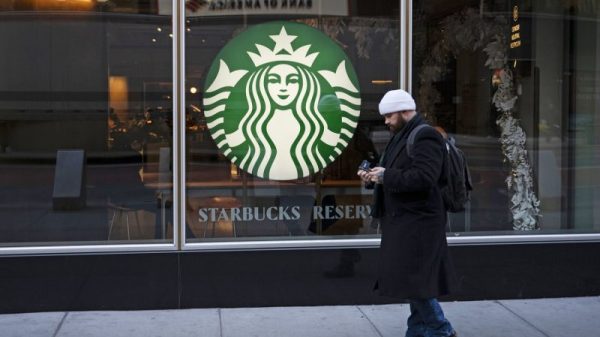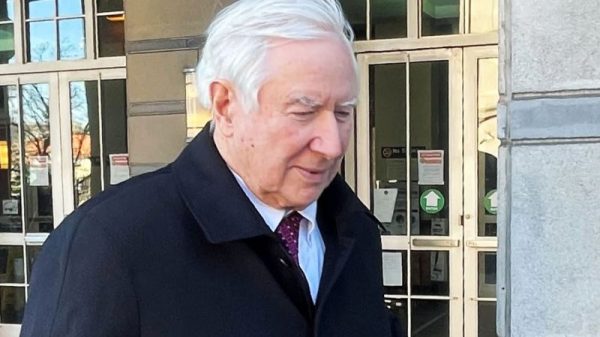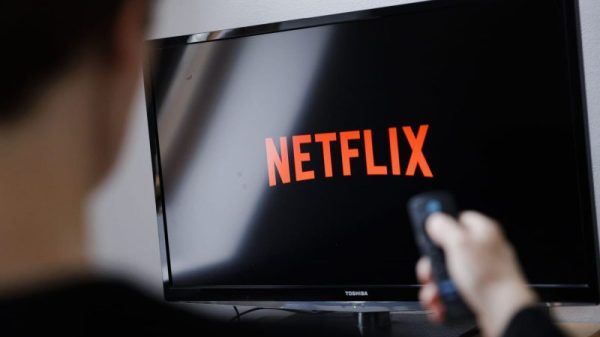On Saturday, the United States will mark one month since the federal government officially shut down — one of the longest and most disruptive shutdowns in the nation’s history.
What began as a political standoff over spending priorities has spiralled into a nationwide crisis affecting millions of Americans, from federal employees to low-income families and small business owners.
The shutdown, which began on October 1, has suspended or slowed operations across dozens of federal agencies.
Around 1.4 million government employees are either working without pay or have been sent home indefinitely.
According to the Bipartisan Policy Center, about 730,000 federal workers — roughly a third of the federal workforce — continue to perform their duties without pay, while another 670,000 have been furloughed because departments cannot legally issue salaries.
The numbers are expected to rise as government funds dry up, making this shutdown not only lengthy but potentially the most economically damaging since 2018.
Why did the US government shut down?
The shutdown stems from Congress’s failure to pass a budget before the previous fiscal year expired on September 30.
Despite multiple attempts, Republicans and Democrats could not agree on a spending plan.
The Republican-controlled House passed a stopgap funding bill, but it failed in the Senate, where Democrats hold enough seats to block major legislation requiring 60 votes.
At the heart of the impasse are disagreements over healthcare and spending cuts.
Democrats are pushing for an extension of tax credits that reduce health insurance costs for millions of Americans and a rollback of cuts to Medicaid.
They also oppose reductions in funding for public health agencies.
Republicans, meanwhile, want to trim spending and avoid what they call “welfare expansions.”
President Donald Trump has accused Democrats of obstructing “essential reforms,” framing the dispute as a battle against “fiscal recklessness.”
Political observers say the standoff has once again exposed deep divisions in Washington.
“It is pernicious because over time these government shutdowns and “almost-shutdowns” and “almost-defaults” lead to a loss of public confidence in the ability of the government to function and to get things done,” says Linda Bilmes, a senior lecturer in public finance at Harvard’s Kennedy School.
Source: Al Jazeera
How everyday Americans are feeling the strain and the SNAP crisis
The impact of the shutdown has rippled across the country.
In Alaska, residents are stockpiling moose and fish for winter, fearing disruptions to food aid.
In Maine, households are filling heating oil tanks ahead of winter but waiting for federal subsidies that may never arrive.
The effects are particularly harsh for the 40 million Americans relying on the Supplemental Nutrition Assistance Program (SNAP).
While SNAP had enough funds to continue through the first month of the shutdown, the Trump administration has warned that the program’s budget will be depleted by November 1.
If no agreement is reached, millions could lose access to food aid for the first time in the program’s history.
Half of US states and the District of Columbia have already sued the administration over the looming freeze.
The pain extends to military families as well.
Research by Rand shows that about a quarter of military households experience food insecurity, and 15% rely on SNAP or local food pantries.
The Military Family Advisory Network reports that 27% of such families have less than $500 in emergency savings.
Federal workers struggle without pay, heat assistance takes a hit
Another critical concern is energy assistance.
The Low-Income Home Energy Assistance Program (Liheap), which helps six million Americans pay utility bills, has been disrupted.
The government typically releases Liheap funds in mid-November, but with the shutdown ongoing, those payments are on hold.
With temperatures falling across northern states, many low-income households face the threat of being cut off from heating fuel.
While some states prohibit utilities from disconnecting electric or gas services, the rules don’t cover propane or heating oil — lifelines for many rural families.
Meanwhile, thousands of federal employees and contractors have gone weeks without pay.
For some, the financial strain has become acute.
Food banks in Washington, DC, and other major cities have reported surges in demand as unpaid workers seek assistance.
If the shutdown continues until 1 December, some 4.5 million paycheques will be withheld from federal civilian employees, making for about $21bn in missing wages, according to the Bipartisan Policy Center.
Among those hit hardest are congressional aides, researchers at the National Institutes of Health, and maintenance workers at national parks.
Contractors, who are typically not reimbursed for lost hours, have also been sidelined.
Lengthy shutdown could cost the US economy up to $14 bn in economic output
The economic consequences of the shutdown are starting to show.
According to a report from the Congressional Budget Office (CBO), the prolonged impasse could shave between $7 billion and $14 billion off US economic output.
The CBO estimated that real GDP growth in the fourth quarter of 2025 could be 1 to 2 percentage points lower than it would have been had the government remained open.
While the agency expects growth to recover by 2026, some of the losses — particularly from lost wages and delayed projects — will be permanent.
Source: Statista
“The effects of the shutdown on the economy are uncertain,” CBO Director Phillip Swagel wrote in the report.
“Those effects depend on decisions made by the Administration throughout the shutdown,” he said.
The economic fallout extends beyond lost output.
Federal agencies such as the Bureau of Labor Statistics have halted data collection, delaying critical economic reports like the monthly jobs and inflation figures.
That poses a problem for the Federal Reserve, which has been adjusting monetary policy amid signs of a cooling economy.
Earlier this week, the Fed cut interest rates by 25 basis points, lowering the benchmark range to 3.75%-4.00%.
However, JP Morgan analysts warned that the continued lack of economic data will make it harder for the Fed to gauge whether further rate cuts are needed.
“It’s going to be challenging to discern what this means for the direction of Fed policy. If the shutdown is lengthier, it could muddy the waters about how markets price the likelihood of any rate cuts past December,” said Jay Barry, head of Global Rates Strategy at JP Morgan.
Trump urges Republicans to invoke the ‘nuclear option’
Beyond the numbers, the shutdown has reignited debate about the US political system itself — and whether it has become too polarized to govern effectively.
President Trump has called on Senate Republicans to invoke the “nuclear option,” a procedural move to eliminate the filibuster and allow spending bills to pass with a simple majority.
In a late-night social media post on Thursday, he urged his party to “get rid of the filibuster, and get rid of it, NOW.”
However, Senate Majority Leader John Thune has resisted the idea, calling the filibuster a “bulwark against rash decisions.”
Many in his party agree, warning that scrapping the rule could backfire when Democrats regain power.
The filibuster — a Senate rule requiring 60 votes to advance most legislation — has long been a source of frustration for presidents and lawmakers of both parties.
While Democrats under former President Joe Biden once pushed for limited changes to protect voting rights and abortion access, they too stopped short of ending it altogether.
For Trump, this is not new territory. He railed against the filibuster during his first term, calling it a “joke” that allowed “eight Democrats to control the country.”
Can a cycle of shutdowns be averted?
Political analysts say that, as with past funding lapses, the current impasse in Washington will likely end only when one side concedes.
“It could be a long shutdown or a short shutdown, but it will end with someone blinking,” says Zachary B. Wolf, senior writer at CNN Politics.
He draws parallels between this shutdown and the brief lapse during Donald Trump’s first term in January 2018, when Democrats, pushing for protections for undocumented youth under the Deferred Action for Childhood Arrivals (DACA) program, eventually relented after a few days and agreed to a temporary funding bill — though the issue remained unresolved.
But beneath these recurring political standoffs lies a deeper structural flaw in how the US manages its budget process, says Bilmes.
Bilmes argues that a series of reforms could prevent such crises from recurring, starting with reorganizing and empowering congressional budget committees that currently lack authority and continuity.
“They get the most junior members, there’s a term limit for membership on the committees, and they don’t have any real power to enforce anything. So, they need to be strengthened or reimagined completely,” she says.
She also points out that Congress lacks a comprehensive view of total federal expenditures, which are split between annually approved discretionary spending and formula-driven entitlement programs handled by separate committees.
Of course, all of that requires a bipartisan appetite to do that and a leadership that is interested in having that kind of conversation.
No easy way out as shutdown hurtles towards being longest in history with 35 days
With no votes scheduled until Monday, the government shutdown appears set to break the record for the longest in US history — 35 days — early next week.
For millions of Americans, that milestone offers little comfort.
The uncertainty has already rattled consumer confidence, strained family budgets, and raised doubts about Washington’s ability to respond to future crises.
“For federal workers, this shutdown is really personal,” says Bilmes, adding that while at the most basic level, missed paychecks force them to scramble, delaying their mortgage payments and their credit card payments and borrowing money and so on, but beyond the paycheck, it’s a “gut punch to morale.”
“Most people who work for the federal government are mission driven. They are invested in the mission of the agency they work for and have devoted their careers to these missions—whether it’s weather forecasting or producing GDP statistics or cybersecurity or whatever.”
A shutdown is like telling them that their work doesn’t matter.
As the political brinkmanship continues, the consequences are spreading far beyond Capitol Hill.
For now, the world’s largest economy remains partially frozen, its workers unpaid, its data in limbo, and its citizens waiting — not for politics to win, but for governance to return.
The post A government in limbo, a nation on edge: one month into America’s longest shutdown appeared first on Invezz
























